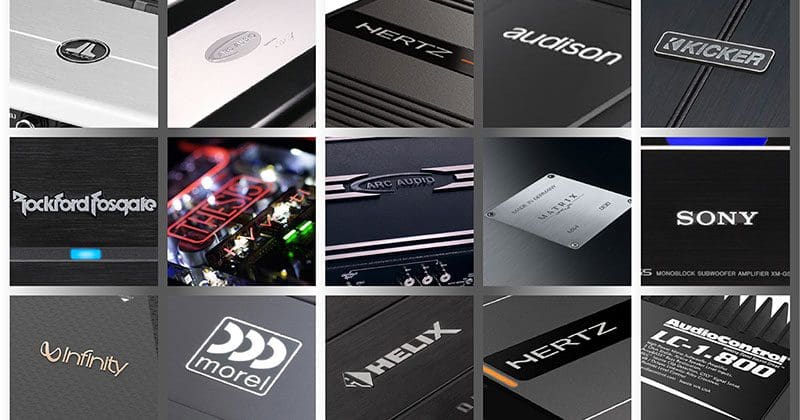Welcome to the BestCarAudio.com 2020 car audio amplifier buying guide. We’ll dive into a real-world look at the features, designs and specifications you should understand to get the right amp for your car or truck to ensure that you can listen to your music the way you want. We’ll start with an explanation of what an amplifier is supposed to do and why it’s vital to enjoying your music. Then we’ll look at some features that will make it easier for your technician to install the system and make it sound great.
What Does a Car Audio Amplifier Do?
You will often hear the perfect amplifier described as a piece of wire with gain. Gain implies that the amplitude of the signal put into one end of that wire is increased as it exits the other end. Since it’s absolutely impossible for a piece of wire to make your music louder, we need some additional components. The number of components and their configuration depends on how much power you need, how much voltage you have available to power the amplifier itself and the features included in the amp.
In a car audio system, your installer will connect the output of your radio to the amplifier, then connect the output of the amplifier to your speakers. The radio may be a factory-installed unit or an aftermarket solution with pre-amp outputs. If you are looking for the best sound quality, using pre-amp output connections typically reduces distortion in the audio signal.

Why Do I Need an Amplifier?
One characteristic of car audio systems that is uniquely different from most home audio systems is the normal listening level. People love to listen to their music loudly when driving. Since there’s typically nobody around to complain about the “noise,” we can crank our favorite tunes and enjoy the drive.
Listening to music at high volume levels requires that a car audio system needs two things: a relatively powerful amplifier, and speakers that can handle that power. Most basic radios produce about 15 to 20 watts of power per channel. That’s enough to hear your music at a moderate level without running into distortion from clipping. If you attempt to turn the volume up to the point that should be fun, you’ll hear the instruments and voices start to garble – that’s distortion. If that’s happening, you need an amplifier added to your sound system.
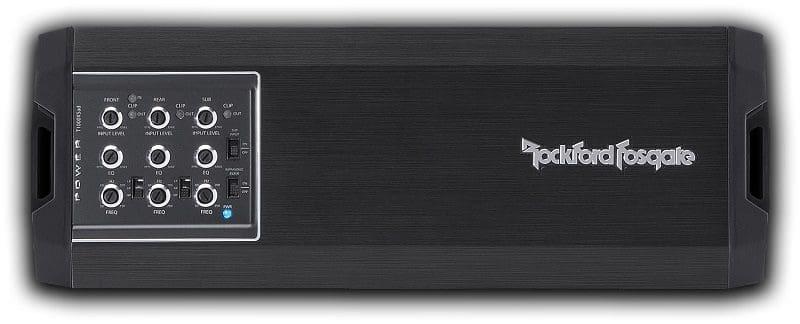
Amplifier Shopping Criteria: Channels
Amplifiers are typically described by two factors: the number of channels they have, and their power ratings. The number of channels ranges from one to eight in amplifiers without an integrated digital signal processor. We’ll save DSP amps for another article. In most cases, one-channel amps are high-power designs intended to drive subwoofers. These amplifiers range from around 200 watts to, well, whatever number you can think of. Some monster amplifiers can produce more than 12,000 watts of power. Yes, that’s not a typo – 12,000+ watts. Uh, you are going to need a lot of batteries and subwoofers to handle that kind of fun.
The majority of single-channel (also called monoblock) amplifiers are designed exclusively for use with subwoofers and play frequencies up to 250 or maybe 500 Hz. A few companies make full-range monoblock solutions – but they are rare.
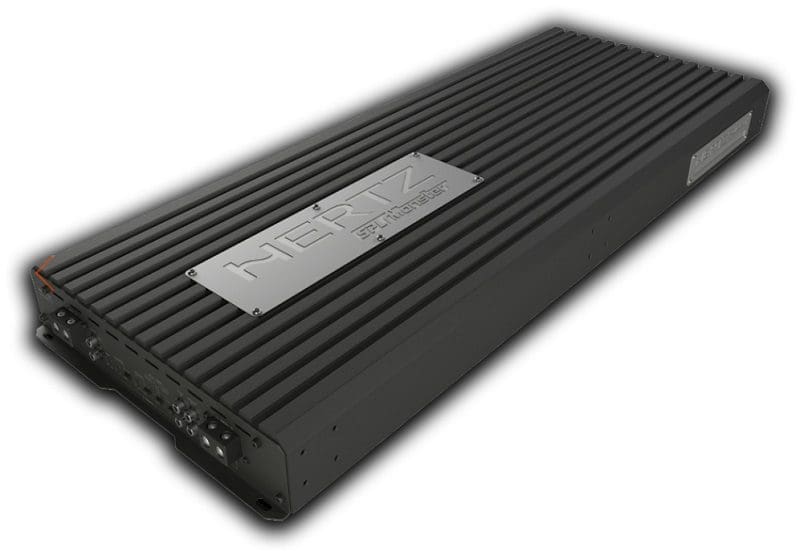
In most full-range amplifiers (those that play from 20 Hz to 20 kHz), pairs of amplifier channels are grouped together to share a common sensitivity (or gain) control, as well as crossover features. Even in four-, six- and eight-channel amps, the controls are often configured in pairs.
The number of channels you need depends on the design of your audio system. If you have one pair of speakers in the doors of your car, then you need a two-channel amplifier. If you have front and rear speakers, then a four-channel amp is ideal. If you’ve got a system that includes a stand-alone digital signal processor and want to dedicate separate amplifier channels to the woofers in the doors, midrange drivers in the dash and tweeters in the sail panels, then you’ll need at least six channels. You may want to add a separate amplifier or another set of channels to drive a subwoofer. You can see that even eight channels can get used pretty quickly, and we haven’t even talked about the rear or surround speakers.
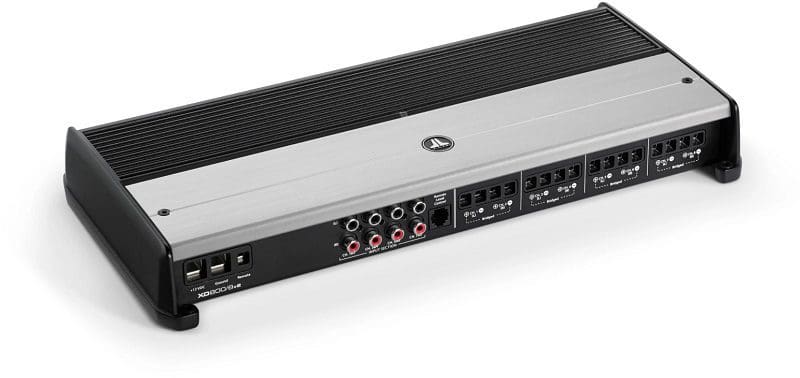
Multichannel System Amplifiers
In the last decade, multichannel amplifiers that include a dedicated high-power channel for subwoofers have grown in popularity. Most of these amplifiers are five-channel designs. They include four medium-power channels to drive front and rear speakers, and a high-power mono channel to drive a subwoofer. The advantage of amplifiers like this is their simplicity in terms of installation. There is only one set of power connections, one remote turn-on connection and only one chassis to mount. System amplifiers are also available in six-channel configurations where the power output capabilities of channels five and six are more than that of the four primary channels. These staggered-power amplifiers are also great for use in three-way active systems where the door woofers require more power than the midrange drivers and tweeters.
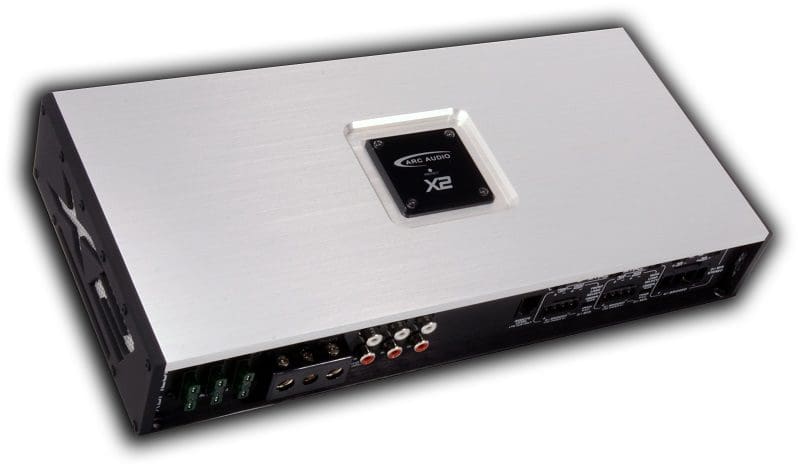
Car Audio Amplifier Bridging
Most full-range amplifiers are designed in a way that allows a pair of channels to be wired so that they can drive a single speaker. This wiring configuration method is known as bridging. If the amplifier is designed with an adequately capable power supply, bridging should be able to provide just under four times the single-channel rated power to the connected speaker. As an example, if an amp is rated to produce 50 watts (at 4 ohms) from each of two channels, it should be able to produce about 200 watts when those channels are bridged together to drive a single 4-ohm speaker.
Many marine audio systems use four- and eight-channel amplifiers in a bridged configuration to power a wakeboard tower speaker system.
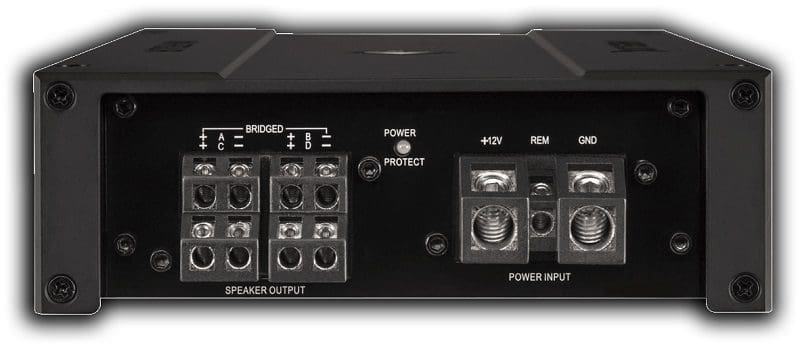
Amplifier Shopping Criteria: Power Ratings
We could (and maybe should) write a book about amplifier power ratings. Nevertheless, power specifications are rated in watts. This specification determines how much energy the amp can provide to a speaker. Car audio amplifiers are designed to increase voltage, and as such, are called voltage amplifiers. Since Ohm’s law tells us that current flow in a circuit is proportional to voltage and inversely proportional to resistance, the low impedance of the connected speakers (4 ohms, for example) determines how much power is produced for a given voltage. More voltage from the amplifier increases the current flow. Lower impedance loads increase the current flow.
The limit to how much power an amplifier can produce is typically based on the maximum voltage it can feed into higher impedances (4 ohms) or how much current the power supply can provide into low-impedance (1- or 2-ohm) loads. When one of these factors reaches its limit, the distortion added to the audio signal skyrockets, and your music will sound horrible.
If you are shopping for an amp for your speakers or subwoofer system, you need to keep in mind that amplifiers with huge power ratings need to draw a lot of current from your electrical system. Most amplifiers are between 70 and 80% efficient at full power. As such, a 2,000-watt amp needs to draw almost 200 amps of current if the electrical system can maintain a voltage of 13 volts.
If you are driving a 2016 Honda Civic with its small Group 51R battery rated at 410 cold-cranking amps and its tiny alternator rated at 135 amps, you aren’t going to be able to feed a 2,000-watt amplifier for much more than a second or two. We could dive into a discussion about the importance of power wiring, but again, we’ll save that for another time. When choosing an amplifier, remember that the vehicle needs power to run the climate control system, the instrument cluster, collision avoidance technologies, the engine computer and the ignition system and still have enough reserve for power windows, windshield wipers and other fun stuff. You may want a massive amp for your subwoofers, but you’ll need to figure out how to provide it with the power it requires to function — short answer: a larger alternator and battery.
Comparing Amplifier Power Ratings
If you’re planning to compare one amplifier to another, then you need to know that the power rating specifications are equal. The Consumer Technology Association (formerly the Consumer Electronics Association) created a standard called CEA-2006 back in 2004. This specifies a set of testing criteria that should be used to rate the power production capabilities of mobile audio amplifiers. In short, it defines the maximum supply voltage to the amp, along with the output bandwidth, load impedance, distortion level and power level. For full-range amplifiers, the spec is typically 20 Hz to 20 kHz, with a load impedance of 4 ohms and a distortion level of less than 1% with the power supply voltage limited to 14.4 volts DC. Amplifiers rated using this specification are easy to compare. If you don’t see the CEA or CTA logo on the amplifier packaging or in the manual, look closely at the specifications. An increase in distortion to something like 5 or 10% will dramatically inflate the stated power level. If the amplifier manufacturer doesn’t specify that its ratings are compliant with CTA-2006-B, you might want to shop elsewhere.
Just a reminder: Amplifier power ratings are not a determining factor in sound quality. Buying a more powerful amp might allow it to play louder, but the increase doesn’t mean that the accuracy of the amp has improved or that the system will sound more realistic.

Amplifier Shopping Criteria: Noise Specifications
It’s incredibly hard to determine the quality of an amplifier without comparing it under controlled conditions to a reference unit. When I was reviewing car audio products, I’d set up eight to 12 amplifiers in my lab and listen to them back-to-back. The differences were dramatic and easily discernable.
In a real-world shopping situation, you’re often listening to amplifiers in different vehicles, with different speakers, with different processor calibrations, or on different display boards. It’s very difficult to pick out performance differences in these uncontrolled situations. As such, we’re forced to rely on some specifications to give us an idea of product quality.
One specification that can be quite telling is the signal-to-noise ratio. This number, expressed in decibels, describes how much noise an amplifier adds to an audio signal of a specific amplitude. The CTA-2006 specification also outlines the criteria for signal-to-noise specifications. The criteria provide the rating, in decibels, relative to an output level of 1 watt into a 4-ohm load.
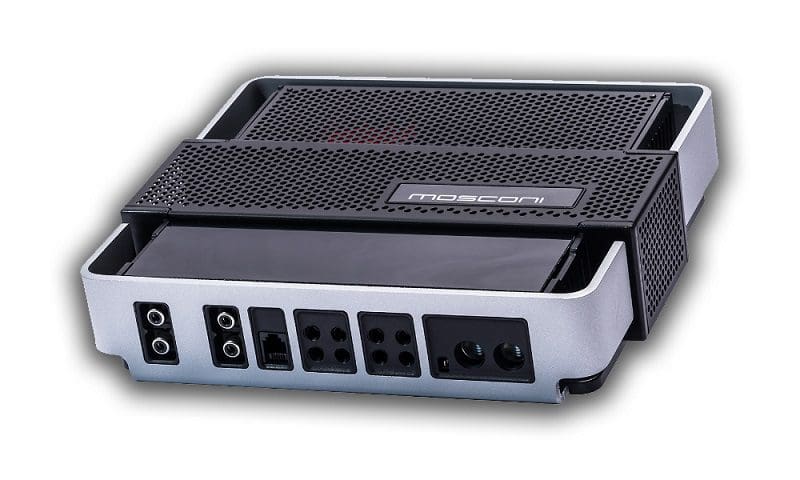
Before CTA-2006, signal-to-noise specifications were rated relative to the maximum power output capabilities of the amplifier. Sadly, this made comparing the amount of noise that amplifiers added to the signal difficult unless they had identical power ratings. As I’ve mentioned in other articles, you have to be sure that the numbers you’re looking at are comparable. If you don’t see the CTA-2006 logo or a mention of the measurement being referenced to 1 watt of power, it’s likely an inflated number referenced to maximum output.
Before we move on from this topic, we should discuss how this spec is perceived in terms of listening to music and how it’s an important factor in determining amplifier quality. Every amplifier adds some amount of noise. The quieter the noise is, the larger the S/N specification will be. An awesome amplifier would have a spec greater than 95 to 100 dB, indicating that the noise added is 95 to 100 dB quieter than an audio signal with an output level of 1 watt. In an amp with a spec in the 80-90 dB range, you may hear a little bit of hiss from the system between tracks. An amp with a spec between 70 and 80 dB may produce noise that’s audible during quiet passages of your music. Specs below 70 dB may add noise that’s always audible.
The physical design of an amplifier influences the amount of noise it adds. The physical proximity of the input connections and low-level signal processing circuitry to the power supply and output devices plays a significant role. In many cases, larger amplifiers add less noise. Likewise, the quality of the components used in the amplifier design can affect noise. Operational-amplifier integrated circuits, for example, vary in their noise specs. These devices (abbreviated as op amps) are used extensively in the input and signal processing stage of all car audio amplifiers.

Amplifier Shopping Criteria: Distortion Specifications
Another specification that can provide some insight into the quality of an amplifier is its distortion ratings. Sadly, there is no standard for this spec, so it has to be analyzed carefully. Distortion measurements, especially in Class-AB amplifiers, decrease as the power output level increases. This characteristic is typically due to a reduction in the effect that crossover distortion has on the signal. As such, these amplifiers sound their best when operated near their maximum output capabilities.
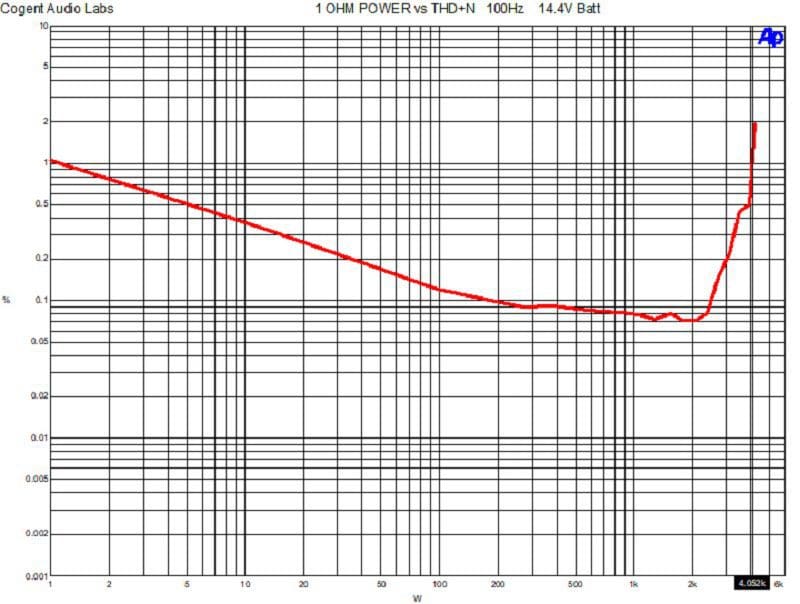
If you’re looking for an amplifier for a set of tweeters or midrange drivers, you’ll want to choose one that doesn’t produce much power. A high-quality, low- to moderate-power amp will operate higher in its output range and thus add less distortion.
If you want to get a quick look at how distortion varies based on amplifier quality, check out this article where I directly compare the distortion characteristics of three different amplifiers. In short, there is an audible difference in clarity between amps rated for 0.1%, 0.01%, and 0.001% distortion. If you want your music to sound as realistic as possible, look for the lowest numbers you can find.
Are We Going to Keep Talking About Distortion?
If you’re a regular reader of BestCarAudio.com, then you’ll know I have a genuine obsession with understanding how distortion affects audio signals. While most people think distortion only happens when an amplifier is pushed to the point of clipping, the reality is that any time you pass a signal through a component, unwanted information is added. That unwanted information is distortion.
Inexpensive or poorly designed expensive amplifiers are notorious for adding harmonic or intermodulation distortion to your music. If you are listening to a soloist sing, the effect is like having a choir singing backup but off-key. If your music sounds “warm” or “bright,” those are also bad signs. A friend of mine who designs high-end car audio tube amplifiers once told me, “If an amplifier sounds warm, the designer doesn’t know what he’s doing.” He’s a smart man. He’s also 100% correct.
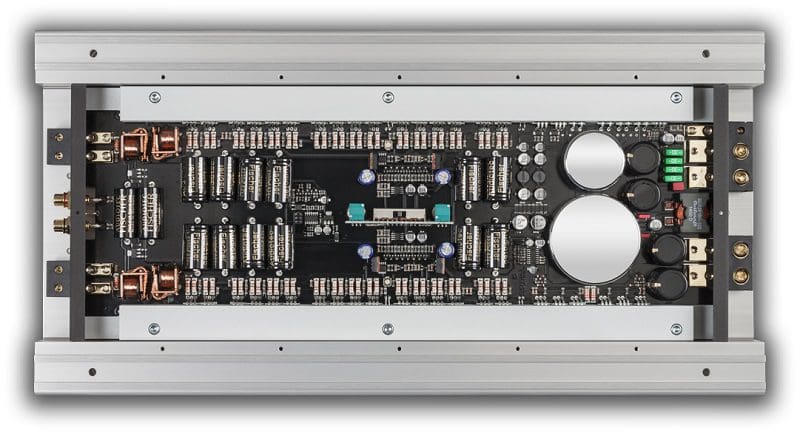
Amplifier Shopping Criteria: Signal Processing Features
Even the most basic car audio amplifier needs to include a sensitivity (often called a gain) control. This adjustment allows your installer to calibrate the amplifier for use with different source units. You want the amp you purchased to be able to produce full power when connected to a radio that provides 1.8 volts of output or one that produces 5 volts. That’s what the sensitivity control adjusts. A few high-end amplifiers have dedicated sensitivity controls on each channel to ensure that your installer has complete control over the system balance.
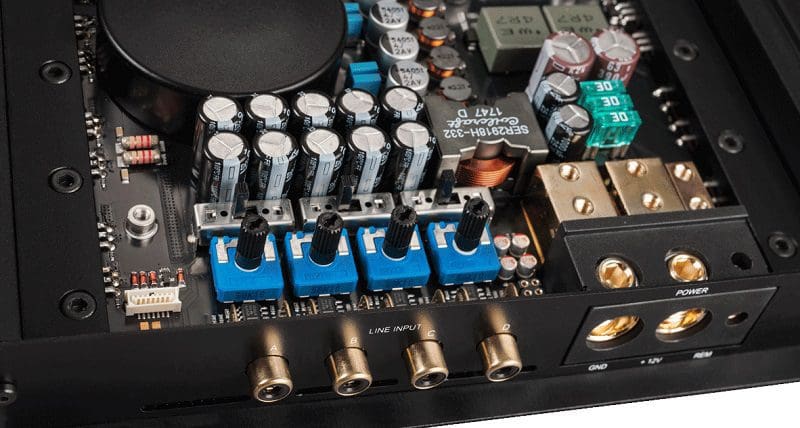
Most modern amplifiers include some sort of electronic crossover. On subwoofer amplifiers, the low-pass crossover typically can’t be defeated and is adjustable from the upper frequency limit (typically 250 to 500 Hz) of the amp down to about 40 or 50 Hz. On full-range and multichannel amplifiers, the crossover should have the option of being configured in a low- or high-pass setting to allow you to use the amp with a variety of system designs. Some manufacturers include a range multiplier switch that moves the crossover frequency adjustment range from, say, 50-500 Hz to 500-5 kHz so that it can be used to filter tweeters. A few amplifiers include separate high- and low-pass filters on the same set of channels so your installer can create a bandpass filter for a midbass or midrange driver.
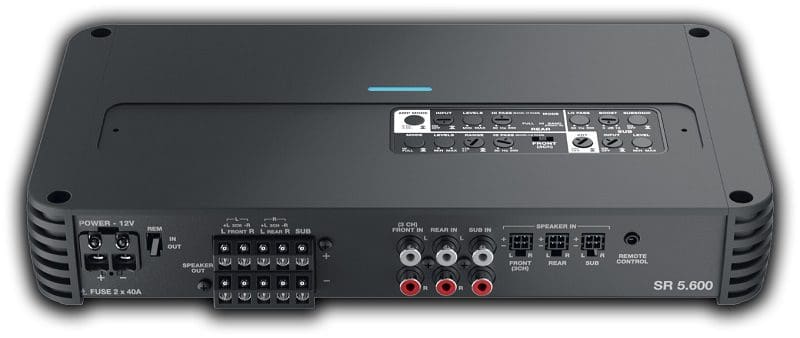
Another crossover found on high-power subwoofer amplifiers is called an infrasonic filter, though many amplifiers are incorrectly labeled as having a subsonic filter. The word subsonic refers to an object traveling at less than the speed of sound. Nevertheless, an infrasonic filter is a high-pass filter, usually adjustable from 15 to 30 Hz, that prevents subwoofers from being damaged because of high excursion levels at low frequencies.
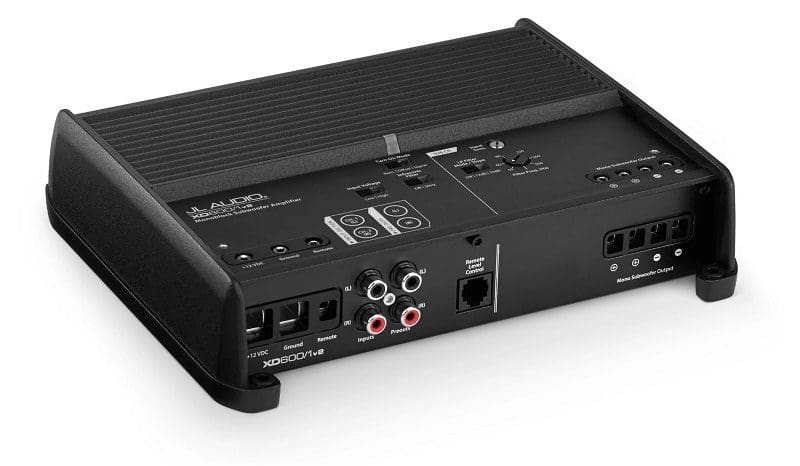
Some subwoofer amps include a phase adjustment. Your installer can use this feature to alter the phase of the audio signal around the crossover point to help align the acoustic output of the subs with that of the midbass drivers in the front of the vehicle.
Bass boost is another popular feature. Depending on the amplifier, your installer can apply an adjustable amount of boost around a specific frequency to enhance the performance of small subwoofers. These bass boost equalizations are typically quite narrow in bandwidth and are focused around 45 Hz. Higher-end amplifiers include an adjustment for the bass boost frequency as well.
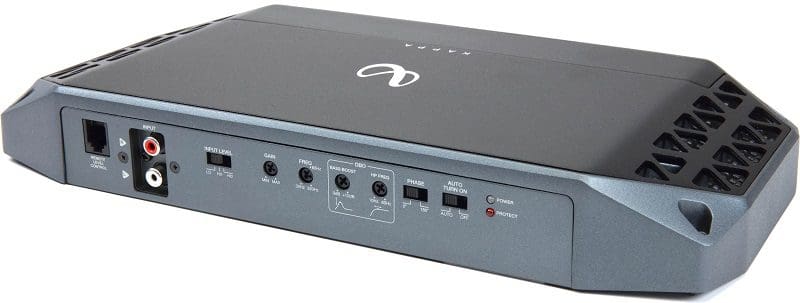
If you have a multichannel amplifier, switches are often included that let the signal from a single pair of inputs be routed internally to another set of channels. This function eliminates the need for Y-cables outside the amp and helps keep the installation tidy. A rare but handy feature found on a few four-channel amps is a switch that converts the amp into a two-channel model, where each pair of channels would be bridged to a single speaker. This configurability is excellent for those wakeboard tower applications we mentioned earlier.
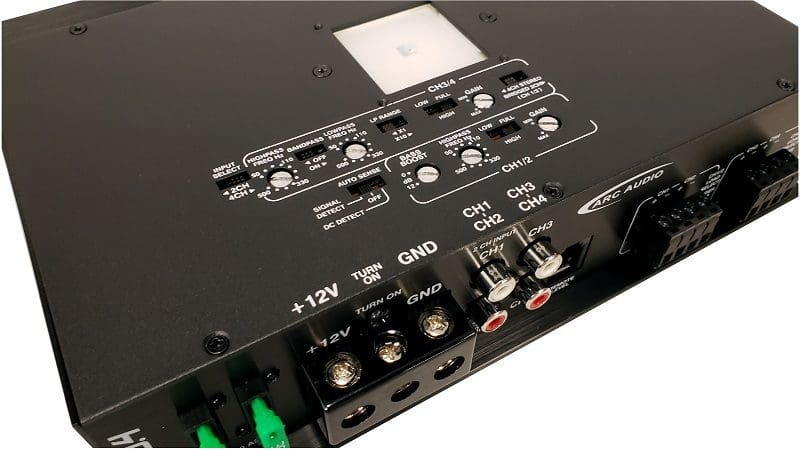
Remote level controls allow you to adjust the output of the amplifier. These are common on subwoofer amps – though some require you to purchase the control module and cable separately. When appropriately designed, the level control should let you attenuate the audio signal rather than boost it. Your installer can configure the amp to produce maximum output using the sensitivity control, then let you fine-tune the balance of the system with the remote. When shopping, avoid amplifiers with remote bass boost functions. You don’t want to turn up a specific frequency range when a song comes on with a great bass line – you want to adjust all bass frequencies simultaneously.
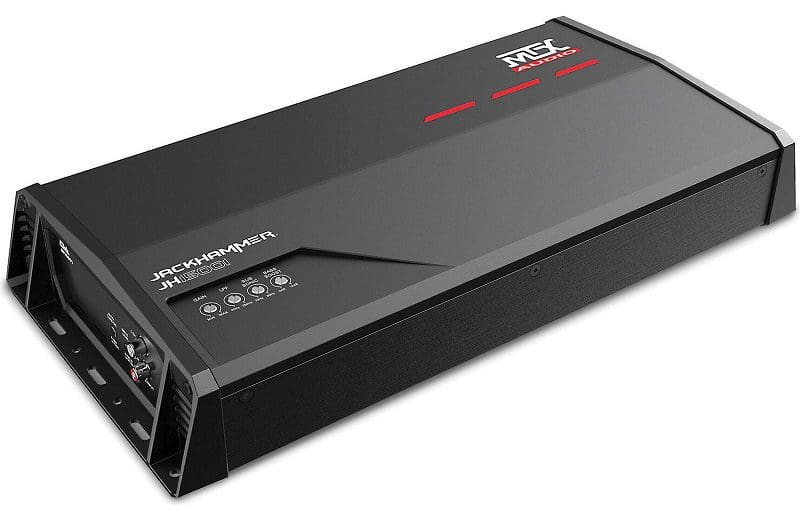
Amplifier Shopping Criteria: Class-AB or Class-D?
There are two camps in the car audio industry when it comes to amplifiers: Class-AB and Class-D. While there are audible differences between the two, what matters most is that their design is executed properly. Yes, a world-class Class-AB amp will sound more transparent and accurate than a Class-D amp. With that said, a poorly designed Class-AB will sound worse than a good Class-D.
The benefit of Class-D is size. Amplifier heat sinks are (or should be) chosen based on how much heat is generated by the amplifier. The creation of heat depends on the amount of power the amp can produce and the efficiency of the design. As an aside, watch for high-power amplifiers with suspiciously small heat sinks. You may find that they shut themselves down because of overheating when pushed hard.
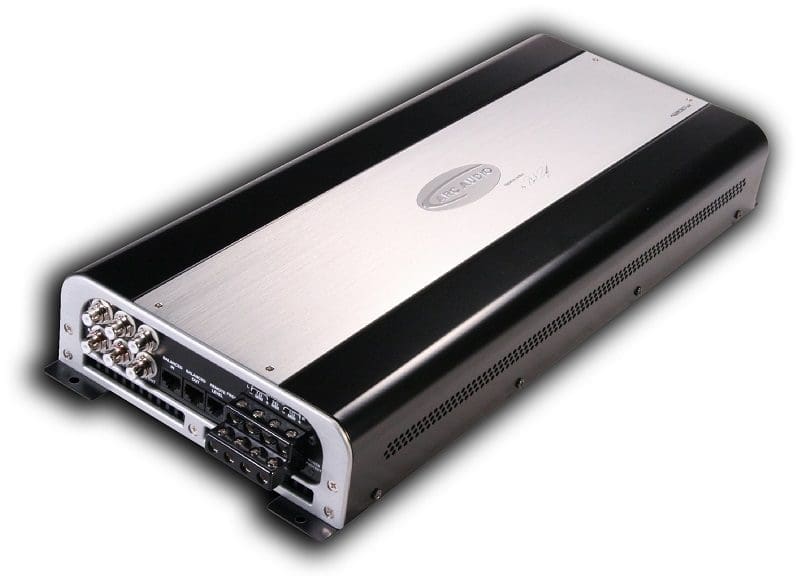
At full power, Class-AB and Class-D amps are pretty similar in terms of efficiency. At 25% of their rated power output capability, the Class-D amp may draw one-third as much current as an AB design. That decrease in current consumption comes with a correlating reduction in wasted energy. As vehicle electrical systems become smaller and smaller, amplifier efficiency matters. Here’s a cool article that compares Class-AB and Class-D amplifier efficiency.
Without getting into a big debate, the good Class-AB amps on the market add less distortion than the good Class-D amps. If you want your music to sound as realistic as possible, then the choice is clear. Just make sure you have room for those amps in your trunk – they aren’t going to be small.
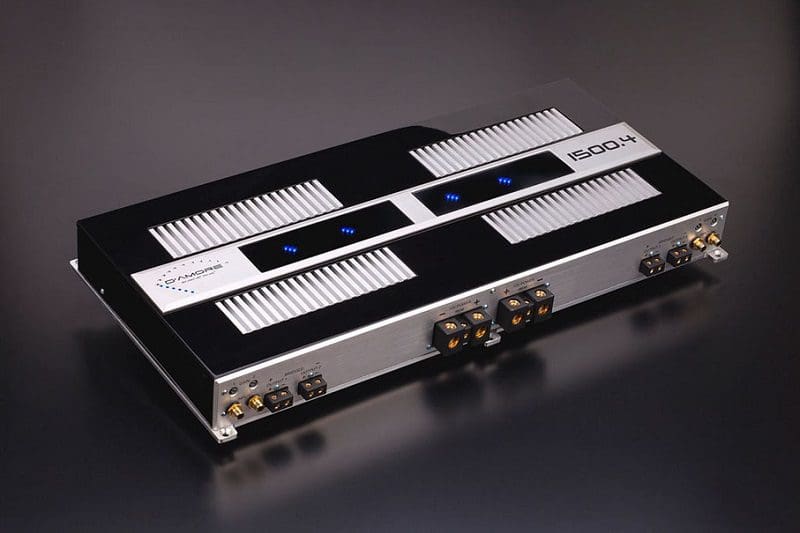
Amplifier Shopping Criteria: Factory Audio System Integration Features
There are a few features you’ll want to look for if you are planning on having a new amplifier connected to a factory-installed radio. First, the amplifier should have a speaker-level input solution. This feature will typically accept up to 20 volts of signal and eliminate the expense of an external line-level adapter module.
You’ll also want to look for an amp that has several remote turn-on options. While most amplifiers wait for a 12V signal from an aftermarket radio, factory-installed radios can’t typically provide that output. The amp will need to include a signal-detect switch that, when activated, allows it to turn on when the music starts playing. As another option, some amplifiers monitor the speaker output wiring from the factory radio for a small DC voltage on the speaker leads — this is usually called BTL detection or DC offset turn-on. When your new amp sees this voltage, it will turn on automatically.

Amplifier Shopping Criteria: Stop-Start Vehicle Compatibility
Many vehicles automatically shut off the engine when you come to a stop at a traffic light. This feature has proven to save a significant amount of fuel, but it has a drawback when it comes to your audio system. When the vehicle restarts, the electrical system voltage can drop well below 9 volts. This voltage drop can cause aftermarket source units, signal processors and amplifiers that aren’t designed to handle these extreme voltages to shut down. A few amplifiers on the market use a microcontroller that will let the amp continue to function at voltages down to 6.5 volts for a few seconds. That’s long enough for the engine to start and the alternator to bring the voltage back to the 13- to 14-volt range.
On-Board Amplifier Fusing
You can tell a lot about the power production capabilities of an amplifier by the fuses on the chassis. If you’re looking at an amp that claims to produce 1,000 watts of power but only has a single 30 amp fuse, then you are going to be disappointed if you think the specification is real. As a quick-and-dirty rule of thumb, you can multiply the fuse rating by a factor of 10 to give you an idea of how much continuous power the amplifier will produce. So, a single 30 amp fuse is good for about 300 watts. Two 40 amp fuses would be good for 800 watts. If the amplifier you have in mind doesn’t include fusing, don’t fret. The presence of fuses isn’t a determining factor in quality. Your installer will have to add a dedicated fuse that matches the rating in the owner’s manual. As such, there will be some added expense during the installation.
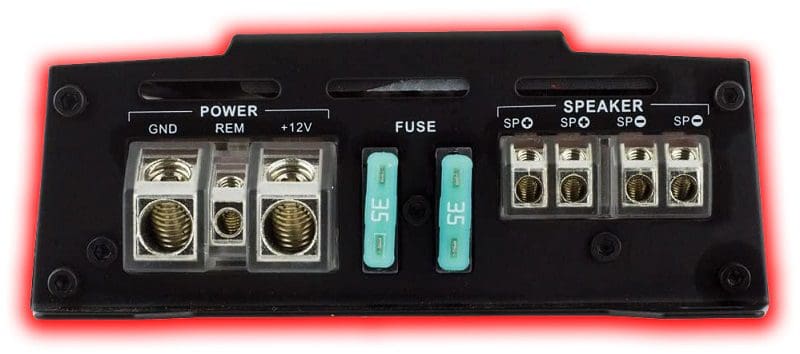
Electrical Connections
While the specific style of electrical connections doesn’t matter significantly, ensuring that every connection is secure is crucial – especially the power connections. Car audio amplifiers draw a lot of current compared to most devices in a vehicle. A loose power or ground connection or a wiggly fuse will heat up quickly and damage the amp. Whether the amp uses terminal strips, removable connectors or terminal blocks, your installer will want to make sure everything is tight. It’s not unreasonable to check these connections at least once a year to ensure that everything is still secure.
We briefly mentioned wiring earlier. One thing that’s changed in terms of amplifier installations is how ground connections are made. As more and more vehicles are built using adhesives instead of spot welds, you may need to have your installer run a ground wire from the amplifier mounting location directly to the battery’s negative terminal.
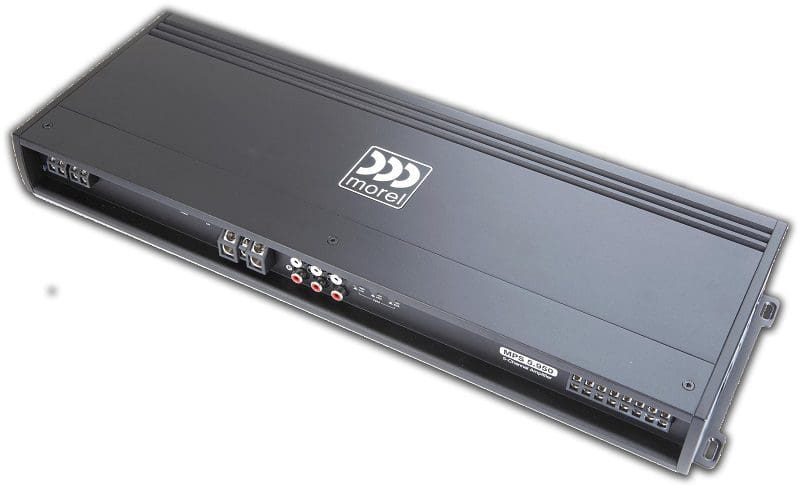
Integrated Error Detection and Diagnostics
Different amplifiers include different features to help installers diagnose issues with the installation. Most amplifiers have some sort of short-circuit detection circuitry that will turn the unit off if a speaker blows or a wire gets pinched. Similarly, most amplifiers monitor the temperature of the heat sink and will either roll back power or turn the amp off if things get too hot. You want to make sure the amp will protect itself and not become damaged if something goes wrong. Some of the better amplifiers also monitor supply voltage and power supply temperature.
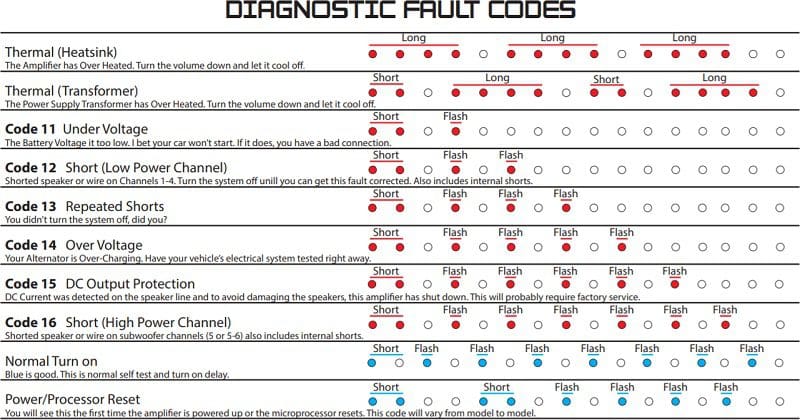
Where to Buy Your Car Audio Amplifier
It should come as no surprise that the team here at BestCarAudio.com recommends that you deal with a local brick-and-mortar mobile enhancement retailer for the purchase and installation of your car audio amplifier. They can help you choose a solution that has the correct number of channels and the right features to complete the installation you have in mind. Likewise, they can use their experience to help you choose an amp that will deliver the clarity and performance needed to make your car audio system sound amazing.
Should you run into any issues, the product specialists and technicians can take care of diagnosing and repairing the problem. Perhaps most importantly of all, they can ensure that the amp is mounted safely, wired properly and configured so that it delivers the cleanest sound and all the performance you paid for.
